The purpose of combustion analysis is to help HVAC technicians ensure fuel-fired heating appliances are running safely and efficiently. Long gone are the days of checking efficiency by the color and shape of the flame. Combustion analyzers measure and calculate a range of variables such as flue temperature, draft pressure, and the byproducts of combustion Read more
Just the Tip
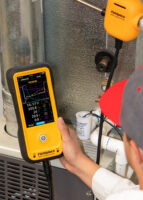
The purpose of combustion analysis is to help HVAC technicians ensure fuel-fired heating appliances are running safely and efficiently. Long gone are the days of checking efficiency by the color and shape of the flame. Combustion analyzers measure and calculate a range of variables such as flue temperature, draft pressure, and the byproducts of combustion like oxygen (O2), carbon dioxide (CO2) and carbon monoxide (CO). To tap into the full power of your combustion analyzer, here are a few tips and best practices to keep in mind this heating season.
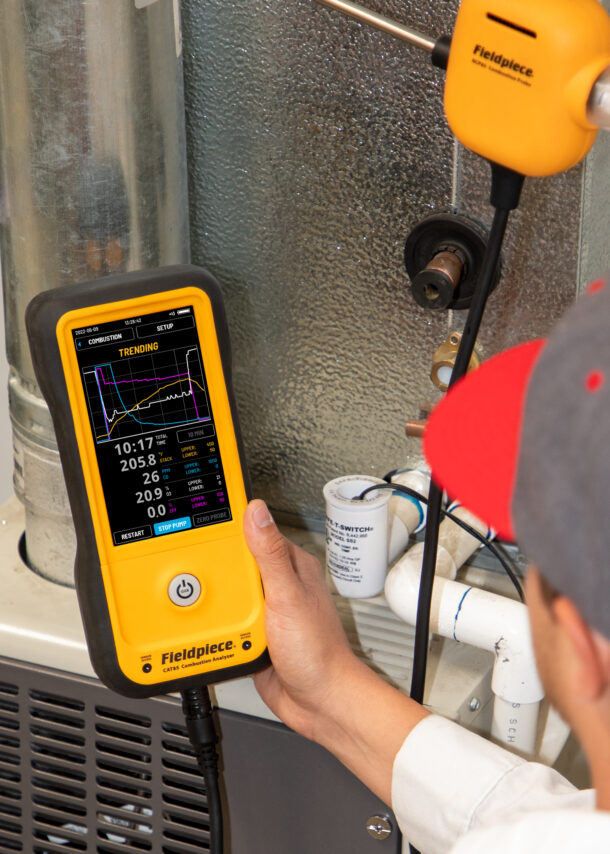
Location, Location, Location
Combustion analysis is all about location. Key measurements are taken in the flue gas after the heat exchanger and prior to any dilution air entering the flue. Typically, the ideal location to measure combustion byproducts, such as CO, is about a foot above the furnace box and at least a foot away from any elbow. Using an existing combustion test access fitting is preferred over drilling into the flue. If an access location must be drilled, reseal the hole following testing with a silicone plug for example, to ensure exhaust gases are not vented into the surrounding space. Silicone is resistant to heat and moisture in the flue, providing a sure seal. When you insert the probe, use a cone lock to hold the sampling tip in the center of flue, at the hottest point.
Warm-up
The best practice is to warm up and insert the combustion analyzer probe prior to firing up the furnace. All measurements should be monitored at start-up, after a system has stabilized and after light out (unit turned off). The analyzer should be turned on and allowed to warm up in fresh air, in order to zero the ambient CO sensor. Avoid starting the analyzer near the exhaust pipe of a service van, or in the furnace room. After the start-up tests, it’s also important to let the furnace run for a few minutes to stabilize before measuring combustion performance.
Monitoring Carbon Monoxide (CO)
During the installation or service of a heating appliance, the fuel and airflow are adjusted to maximize combustion efficiency and safety. If the adjustments allow too much fuel or too much oxygen into the reaction, the imbalance will lead to incomplete combustion. When this happens, it can create a dangerous amount of CO. While you should always defer to the furnace manufacturer’s recommendations and local regulations, what follows are a few key tips when monitoring CO levels.
After the burners light, the CO should rise and fall and the O2 should slowly fall, and both should stabilize within a few minutes. If the CO or O2 levels spike suddenly after the blower starts on a warm air furnace, it is a sign the heat exchanger is compromised in some way. If the CO sensor oversaturates, immediately bring the probe into fresh air, and let the analyzer pump run until the CO displayed level is at or near zero.
Combustion Analyzer Maintenance
To keep your combustion analyzer ready for every heating season job, there are a few recommended maintenance tips. Always drain the analyzer water trap (if applicable) and check the dust filter regularly. When testing is complete, run the pump until CO, O2 and temperature readings return to ambient, removing any residuals from the sensors and analyzer. Also, when you’re powering the combustion analyzer down, ensure the probe has cooled to ambient temperature before inserting it into the carrying case. And finally, it is recommended that sensors be calibrated annually or as required by local regulations.
Let Your Combustion Analyzer Do the Work
A combustion analyzer is a powerful tool to help you keep fuel-fired heating appliances running efficiently and safely. Therefore, the biggest tip is that combustion analysis should be the first and last thing completed during any heating appliance repair. The outlined tips not only help ensure peak performance, but they help you prioritize safety and the use of best practices in your analysis procedures.
 Tony Gonzalez is the Technical Training Manager for Fieldpiece Instruments.
Tony Gonzalez is the Technical Training Manager for Fieldpiece Instruments.

According to Lowe’s proprietary research, 66% of Pros say they’re excited about the potential of technology to improve their efficiency, with retailer-specific mobile apps and built-in tools ranking highly among innovations they see as having the greatest potential to improve their day-to-day. Purchase Authorization, a new feature from Lowe’s within the MVPs Business Tools suite Read more
 According to Lowe’s proprietary research, 66% of Pros say they’re excited about the potential of technology to improve their efficiency, with retailer-specific mobile apps and built-in tools ranking highly among innovations they see as having the greatest potential to improve their day-to-day. Purchase Authorization, a new feature from Lowe’s within the MVPs Business Tools suite of offerings, enables account holders to provide a QR code to a designated runner for in-store purchases and pick-ups, with set time and spending limits. This creates a fast and seamless in-store checkout process, with no more credit card handoffs or confirmation phone calls needed. The tool is now available online and via the Lowe’s app, exclusively for MVPs Pro Rewards and Partnership Program members. Learn more here.
According to Lowe’s proprietary research, 66% of Pros say they’re excited about the potential of technology to improve their efficiency, with retailer-specific mobile apps and built-in tools ranking highly among innovations they see as having the greatest potential to improve their day-to-day. Purchase Authorization, a new feature from Lowe’s within the MVPs Business Tools suite of offerings, enables account holders to provide a QR code to a designated runner for in-store purchases and pick-ups, with set time and spending limits. This creates a fast and seamless in-store checkout process, with no more credit card handoffs or confirmation phone calls needed. The tool is now available online and via the Lowe’s app, exclusively for MVPs Pro Rewards and Partnership Program members. Learn more here.

Being well-prepared is very important in the field of plumbing. A plumber’s reputation might take a hit if they show up to a project without the proper tools, which increases the likelihood that the job will be mishandled. Every professional plumber must have several essential pieces of equipment on hand at all times, despite the Read more
Being well-prepared is very important in the field of plumbing. A plumber’s reputation might take a hit if they show up to a project without the proper tools, which increases the likelihood that the job will be mishandled. Every professional plumber must have several essential pieces of equipment on hand at all times, despite the fact that some tasks can call for specialized instruments. The following are the top five items a plumber must always have.
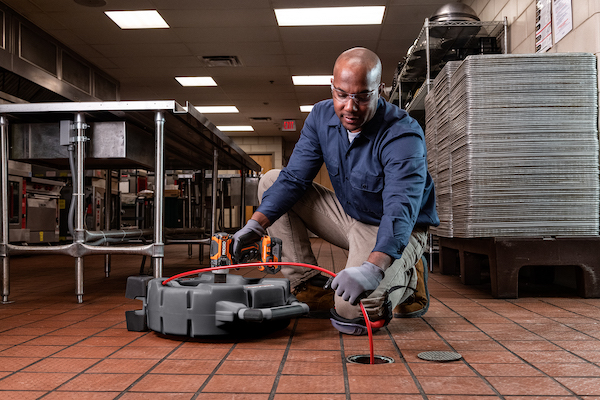
1. Comprehensive Tool Kit
For a plumber, much like any other tradesperson, the caliber of their work is often reflected in the tools they wield. Their toolbox extends beyond just an assortment of wrenches; it’s a curated collection encompassing pipe cutters, pliers, tape measures, and various specialized tools. The efficiency is amplified when the plumber’s arsenal is complemented by truck tool box accessories. These enhancements not only keep tools organized but also prevent them from becoming hazards during transportation. With the right tools in their arsenal, plumbers can execute tasks with precision and efficiency, ensuring the job is done right the first time, minimizing the risk of inadvertent damage.
2. Plumbing Snake and Drain Auger
In the world of plumbing, clogs are an all-too-familiar foe that often shows resistance to even the most fundamental of treatments, such as using a plunger. When a situation arises, the plumbing snake, sometimes referred to as a drain auger, steps up to the plate as the unsung hero. Can battling even the most tenacious clogs are moving them because of its design, which allows them to get deep into drains. Plumbers can arm themselves with the adaptability necessary to deal with a wide variety of clog conditions if they have an armory that includes manually operated and power-powered variations of the same tool. Because of this flexibility, no obstacle cannot be overcome, regardless of the kind or level of the obstacle.
3. Waterproof Work Gear
Regarding plumbing, water can be both a friend and an enemy. Even though it is the same medium they operate, the pervasive presence of water in leaking pipes or blocked drains can make the working environment dangerous. It is impossible to emphasize the necessity of waterproof work gear, which includes items like boots, gloves, and protective eyewear. Such equipment allows plumbers to easily maneuver their wet environment while maintaining their ability to remain dry and comfortable. This gear is more than just convenient; it also serves as a protective barrier, preventing the wearer from slipping, falling, and being exposed to any pollutants hiding in the water.
4. Advanced Diagnostic Equipment
The plumbing industry has also adapted to the modern technology age. It used to be a guessing game when determining what was wrong with a plumbing system. Still, modern instruments like inspection cameras have eliminated that element of uncertainty. Also, leak detection kits have changed the game by making it possible to find concealed leaks without tearing up walls or crawling around on the floor. Modern plumbing inspections are now easier and more accurate thanks to advances in cutting-edge diagnostic tools. This not only saves precious time but also makes better use of available resources, which in turn leads to better outcomes.
5. Pipe and Drain Inspection Cameras
Pipe and drain inspection cameras represent a remarkable technological advancement in the plumbing industry. These ingenious devices provide plumbers with a direct visual assessment of the inner workings of pipes and drains. By offering a clear, real-time view of the interior, these cameras eliminate the need for conjecture and uncertain diagnoses. This not only expedites the troubleshooting process but also facilitates the precise identification of problems, from blockages to corrosion. As a result, plumbers can formulate targeted repair strategies, minimizing the disruption to the plumbing system and maximizing efficiency. These cameras are a testament to the industry’s commitment to innovation, significantly enhancing the accuracy and effectiveness of plumbing repairs and maintenance.
Conclusion
In the vast field of plumbing, readiness is pivotal for success. If plumbers make it a habit to carry these five critical supplies at all times, they may confidently take on almost any job. It is not enough to just eliminate an issue; rather, it is necessary to do it in a way that is both productive and dependable at all times. And in a line of work where credibility is absolutely essential, having the appropriate resources at your disposal may make all the difference.
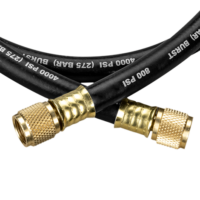
Tips for taking care of your hoses If you’re a busy HVACR professional, the pieces of equipment that you use most are often hoses. From performing evacuations and refrigerant recharges to hooking them to a manifold for quick diagnostic checks, hoses are used every day. Let’s walk through some of the best ways to care Read more
Tips for taking care of your hoses
If you’re a busy HVACR professional, the pieces of equipment that you use most are often hoses. From performing evacuations and refrigerant recharges to hooking them to a manifold for quick diagnostic checks, hoses are used every day. Let’s walk through some of the best ways to care for and inspect your HVACR vacuum and charging hoses.
 Replacing gaskets
Replacing gaskets
Replacing the small black gaskets in your hose connectors is one of the easiest and fastest ways to maintain your hoses. Normal wear and tear can cause the gaskets to deteriorate and create leaks or incomplete connections. When making connections, inspect the gasket. Also, add a drop of refrigerant oil or Nylog to the gasket. This creates a seal between the gasket and the port. Since they need to be changed frequently, store some new gaskets in your shop and teach your team how to spot wear and tear. It’s important to remind techs of the dangers of a worn gasket on the job site.
Cap your hoses
When you aren’t using hoses, cap them on each end with brass caps. This keeps the seals from drying out and ensures hoses stay clean and dry. With this, it helps to set aside hoses that are used for pulling vacuums and use them only for this task. Don’t use them for recovery or normal service. This ensures that your vacuum hoses are always in good condition.
Using hoses on the job site
Sometimes, HVACR connections aren’t in the most convenient locations, and this can cause unnecessary wear and tear on hoses. Be sure to avoid creating sharp bends or excessively twisting them when connecting hoses to the system. Remember, never leave them out in the sun or expose them to extreme temperatures for extended periods of time.
Store hoses correctly
When you’re moving or storing your hoses, be sure not to step on the fittings or store them under heavy equipment. Make sure to properly hang them in a way that prevents them from getting damaged. Since these hoses need to hold vacuums or maintain pressures between 800 and 4000 PSI, they can develop cracks or weak spots if they aren’t stored properly and safely.
Inspect them every time
When you use a hose on the job, inspect it for signs of wear that could include cracks, bulges or other degradation. Each of these threats has the potential to cause a dangerous situation that may lead to equipment damage or injure a tech. Any hose that shows these signs should be removed from the job site and discarded. When using a hose pay attention to reduced flow, blockages or leaks – some of these problems might not be apparent on first inspection.
Pick up some new hoses
If your hoses are worn out or need replacement, add some new ones to your tool bag right away. Learn more about Fieldpiece hoses and accessories here.
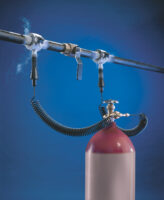
By Marty Silverman, General Pipe Cleaners How to repair a pipe without shutting down the whole building Q: We had a lot calls for broken water lines this past winter. It was a pain to my customers when the water had to be shut off each time we made a repair. Is there a better Read more
By Marty Silverman, General Pipe Cleaners
How to repair a pipe without shutting down the whole building
Q: We had a lot calls for broken water lines this past winter. It was a pain to my customers when the water had to be shut off each time we made a repair. Is there a better way?
A: Yes, you can use a pipe freeze system. It may sound crazy to intentionally freeze a pipe. But, under controlled conditions, creating an ice plug is a fast and easy way to make a repair to the line without shutting off the water to you customers building or home.
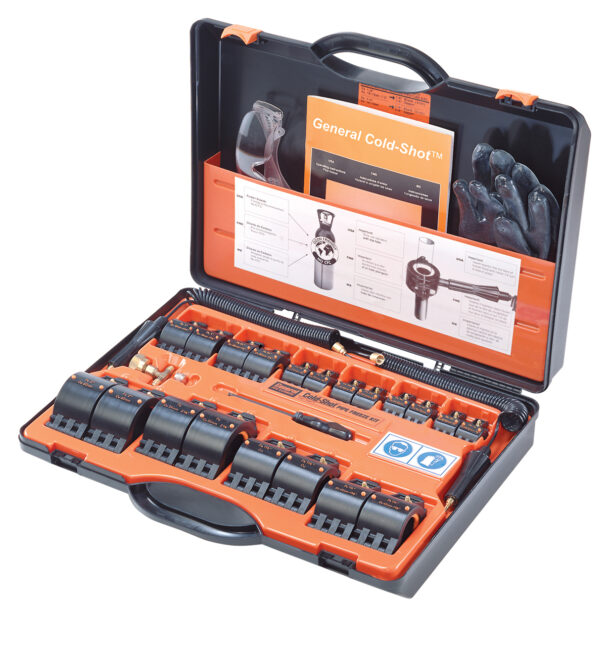
It freezes all types of liquids in steel, copper, cast iron, aluminum, and plastic pipes ranging from 1/8″ to 2″. The freeze kit uses carbon dioxide (CO2) from a dip-tube tank available at most welding supply houses. The cold liquid CO2 is -110 degrees so it can freeze the water is just minutes. A 1/2″ copper pipe freezes in just 5 minutes, or just 3 minutes in cast iron. The ice plug is so strong it can withstand up to 7000 psi.
So there’s no need to drain water lines, sprinkler systems, or hot water systems before cutting pipe or tubing. You can keep your pressurized system operating while you make repairs.
For more information, or to ask a question, call the Drain Brains® at General at 800-245-6200, or visit www.askthedrainbrains.com or email info@drainbrain.com.

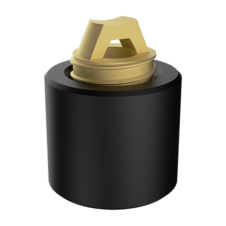 Replacing gaskets
Replacing gaskets